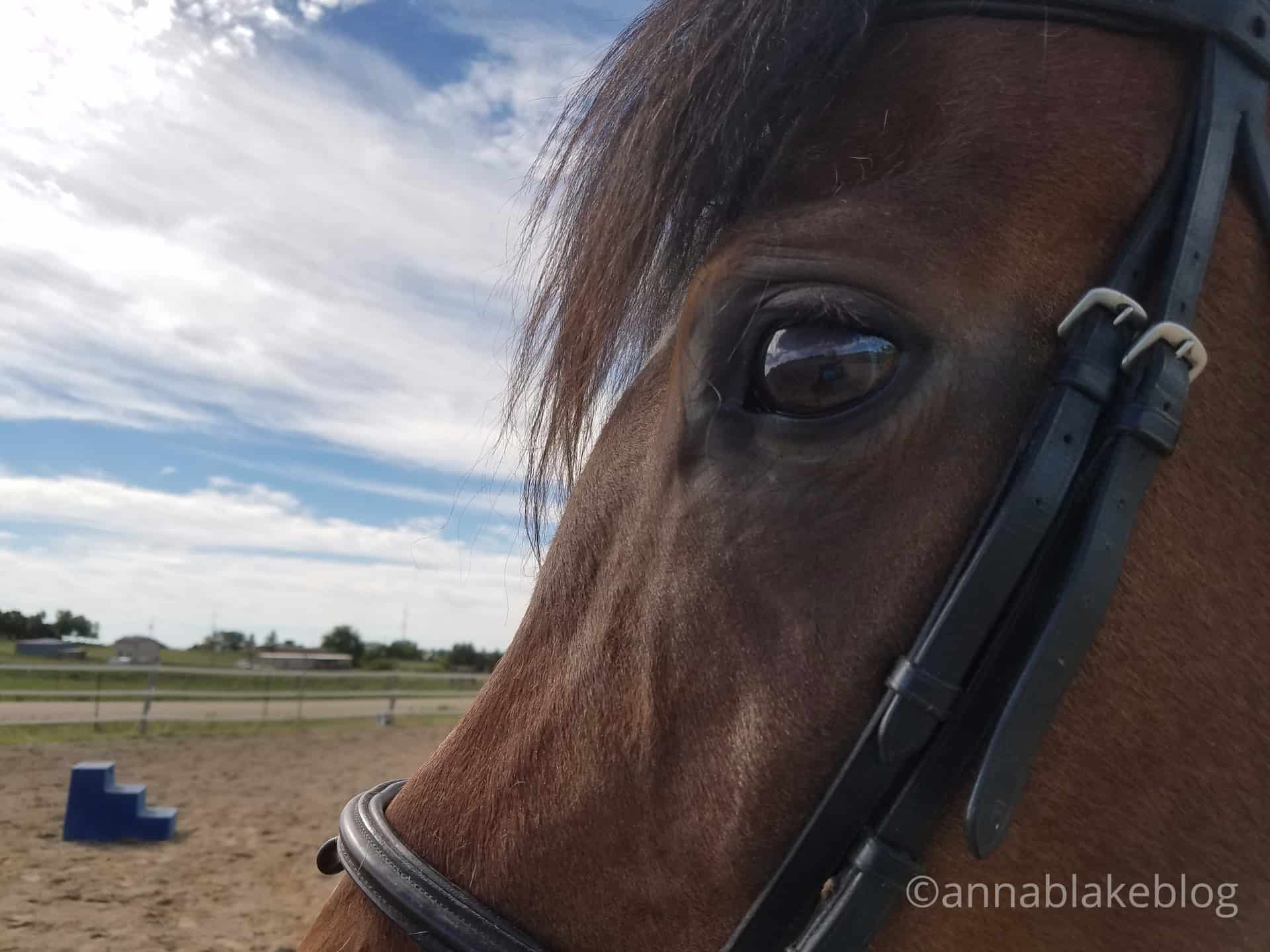The seasons are changing and the air feels cooler. That’s what you notice, but your horse seems just a bit more interested in his surroundings than usual. You feel his tension, so you push ahead. Maybe if you put him to work right away, he’ll pay more attention.
You ask him to do the first thing that occurs to you; you turn him toward the rail. He’s sticky. So the reins get shorter as you insist. He steps slower, and your inside leg goes to work pushing. Then pushing harder. He’s stuck, so you pull the reins over his withers, hard to the outside. Then his shoulder falls to the outside as he tries to find relief from that impossible pull on the inside rein. Now the two of you look like you are trying out for roller derby, but not on the same team.
It’s a war of wills; more passive-aggressive than an out-and-out fight, but adversarial just the same. The resistance is undeniable and you just got on. It’s natural; how you were taught to ride. Meanwhile, the ride feels like one long correction to your horse and he can either get stoic and shut down, or get so compressed that he needs to explode. Bottom line: His anxiety is even higher than when you got on.
Think of it as a runaway of a grudge match. Probably better than whips-and-spurs violence, but is it any kinder? And where to from here?
Well, first, your horse is right. That doesn’t mean that you are wrong, it just means that his vote counts. He’s on the defensive because everything he does is wrong. The conversation between the two of you escalated. Somewhere in those first steps, you felt a need to control him and he resisted. Because that’s the answer every horse gives when you pull on the reins.
Reins give us an illusion of control. And by illusion, I mean it isn’t real.
But the heart of the problem is that rather than being in the moment moving forward, your action was a reaction to what just happened. It’s like a downward spiral and the tone of the partnership changes completely. We stop being leaders and become passive-aggressive bullies, but we only notice that in hindsight. And was either of you even breathing?
Another way of saying it is that the correction was bigger than the mistake. Think about it; it’s like we’re the judge who decides to make an example of a kid by giving him twenty years for shoplifting a sandwich, rather than finding out why he was hungry.
Gaining good judgment about over-correcting is crucial for a rider to improve because constant over-correcting makes a horse dull. It kills his try. Eventually, he’s broken. It’s the flip side of adage Less is More. As a dressage instructor, I really have to quit quoting Ray Hunt so often… but he says it best:
“You need to do less sooner; you’re always doing too much, late.”
I smile every time I read this nearly unintelligible quote. You have had the experience of being tied up in a knot with a horse for it to even make sense. Here’s the good news; if the quote does make sense, you’re half-way there.
REWIND: It’s that same ride. The air feels cooler and your horse seems just a bit more interested in his surroundings than usual. You feel his tension, so you let him look around, as he walks on a long rein. His tension cues you to take deep breaths and blow them out. You’re going to put him to work, but you’ll show him the respect of allowing him to get comfortable first. Take that first walk he offers you, and exhale a thank you. Feel your sit bones unite with his movement. A few strides later, your waist feels looser. That’s how you can tell his stride is lengthening.
If you want to move to the rail, that’s great. Let your legs follow his barrel as it moves back and forth, and slowly begin to pulse with your inside leg, asking him to step to the outside. The rein is still long. Give him all day to figure out his answer. It’s an attitude of a leg yield, but in a way, you are massaging his ribs, so the outside bend is a stretch. It might take the length of the arena to get to the rail, but your horse is more relaxed when you get there. There has been no fight. You’ve used time as an aid to release his distraction and anxiety. You and your horse are together in the present moment, partners at the beginning of a great ride.
Making corrections that are bigger than the original mistake can be habit-forming. You aren’t a malicious rider; you love your horse. It might be nothing more than letting your mind default position that you can let go of now. Being slower to react is an art outside the barn, too.
Do you ever have that moment when things are beginning to spin out of control, and almost as a joke, through gritted teeth, the Serenity Prayer comes to mind? But the words work, even said sarcastically, because the anxiety has to take a breath. Next time you’re having a mental runaway in the saddle, try this:
Horse, grant me the serenity to breathe, the patience to give a small, quiet cue, and the wisdom to listen for the answer with gratitude.
Then in that stillness, perhaps you’ll hear a message back:
Rider, grant me the time to understand what you ask, the confidence to try without fear, and the grateful release of giving you my trust.
Anna Blake at Infinity Farm

You need to be a member of Barnmice Equestrian Social Community to add comments!
Join Barnmice Equestrian Social Community